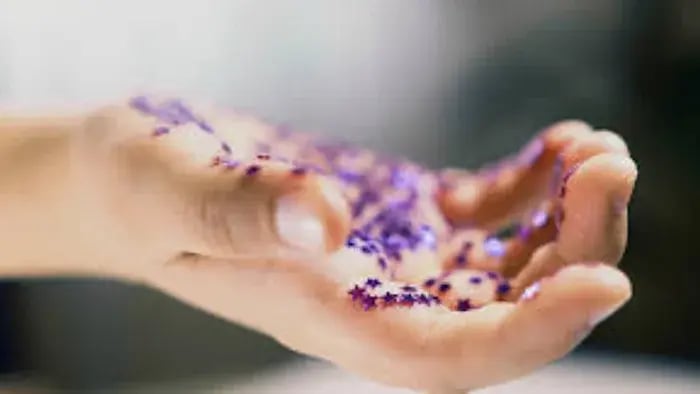- Germs
- Bacteria
- Use Simple Explanations
- Visual Aids and Demonstrations
- Interactive Activities
- Educational Videos and Books
- Handwashing Practice
- Role-Playing
- Set a Good Example
- Create a Hygiene Chart
- Explain the Why
Introduction

Educating kids about germs and bacteria is crucial for health and well-being. Parents want to keep kids safe and healthy but explaining the invisible world of germs can be a bit tricky. However, with the right approach, parents can make learning about germs both fun and informative.
Children are naturally curious and love to explore their surroundings, often with their hands and mouths. This makes them particularly susceptible to picking up and spreading germs. By teaching your child about germs and bacteria, parents can help them understand why good hygiene is important and how it can protect them from getting sick.
Start by explaining what germs are in simple terms: tiny organisms that can cause illness. Use everyday examples, like showing how dirty hands can spread germs to food or toys. You can also use fun activities, such as using glitter to represent germs, to visually demonstrate how easily they spread.
Incorporate stories, videos, and games to make the learning process engaging. Encourage your child to ask questions and be curious about how germs work. By making the topic interesting and interactive, you can help your child develop healthy habits that will keep them safe and well.
What Are Germs And Bacteria?

Germs and bacteria are tiny organisms that can cause illness, but they are different. Here’s a closer look at what they are:
Germs
Germs is a general term for any microscopic organism that can cause disease. This includes bacteria, viruses, fungi, and protozoa. Germs are so small that you cannot see them without a microscope, but they are everywhere: on surfaces, in the air, in water, and even on your skin. Some germs are harmful and can make kids sick, while others are harmless or even beneficial. For instance, some gut germs help the body digest food.
Bacteria
Bacteria are a type of germ. Single-celled microorganisms come in various shapes, such as rods, spheres, and spirals. Bacteria are found almost everywhere, including in soil, water, and inside the human body. While many bacteria are harmless and play essential roles in digestion and decomposing organic matter, some bacteria can cause infections and diseases. Common bacterial infections include strep throat, urinary tract infections, and some types of pneumonia. Understanding the difference between germs and bacteria is important for knowing how to protect kids from illness. By practicing good hygiene, such as regular handwashing, parents can help prevent the spread of harmful germs and bacteria and stay healthy.
How To Teach Kids About Germs And Bacteria?

Teaching kids about germs and bacteria can be fun and informative with the right approach. Here’s how to do it:
Use Simple Explanations
Explain that germs are small organisms that can make them sick and that they are so small no one can see them without a microscope. Bacteria are a type of germ, some of which are good, but others can cause illness.
Visual Aids and Demonstrations
Use glitter to represent germs. Have your child rub some glitter on the hands and then touch different surfaces to show how germs spread. This visual demonstration can be very effective.
Interactive Activities
Engage kids in activities like “germ” hunting with a UV light and special lotion that simulates germs. This can show them how germs can be invisible but still present on hands and surfaces.
Educational Videos and Books
Find child-friendly videos and books that explain germs and bacteria in a fun and understandable way. Many resources are designed to make learning about hygiene engaging for kids.
Handwashing Practice
Teach your child the proper way to wash hands. Sing a 20-second song, like “Happy Birthday” twice to ensure they wash for the correct amount of time. Show them how to scrub all parts of the hand, including between fingers and under nails.
Role-Playing
Pretend to be germs and practice how to get rid of them by washing hands, using tissues, and not touching the face. Role-playing can make the learning process more relatable and enjoyable.
Set a Good Example
Children learn a lot by observing adults. Show them good hygiene practices by washing your hands regularly, covering your mouth when you cough or sneeze, and cleaning surfaces frequently.
Create a Hygiene Chart
Make a hygiene chart with fun stickers to track daily hygiene habits like handwashing, brushing teeth, and using tissues. This makes hygiene a part of our daily routine.
Explain the Why
Help them understand why it is important to keep clean. Explain that washing hands and keeping things clean helps to stop germs from making them and others sick.
Conclusion

Teaching kids about germs and bacteria is essential for kids' health. By using simple explanations, engaging activities, and leading by example, parents can help kids understand the importance of good hygiene practices. Making learning fun and interactive will ensure that these lessons stick, helping your child develop habits that will keep them healthy and safe. With these strategies, you can empower your child to take an active role in preventing illness and promoting cleanliness in daily life.
Tarishi Shrivastava is a young writer who has covered a range of topics on children's health, including nutrition, fitness, sleep, and parent-child bonding. With a keen interest in simplifying wellness for parents, she brings a practical and engaging approach to her writing. Beyond work, she enjoys exploring new ideas, staying curious, and creating meaningful content.
The views expressed are that of the expert alone.
The information provided in this content is for informational purposes only and should not be considered a substitute for professional medical advice, diagnosis, or treatment. Always seek the advice of your physician or another qualified healthcare provider before making any significant changes to your diet, exercise, or medication routines.
References
https://www.singlecare.com/blog/teaching-kids-about-germs/
https://www.care.com/c/teaching-about-germs-for-kids-making-it-fun/










